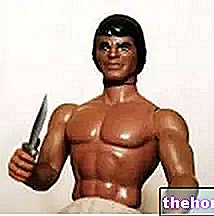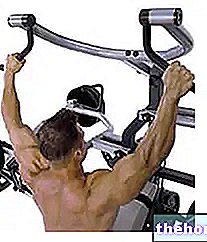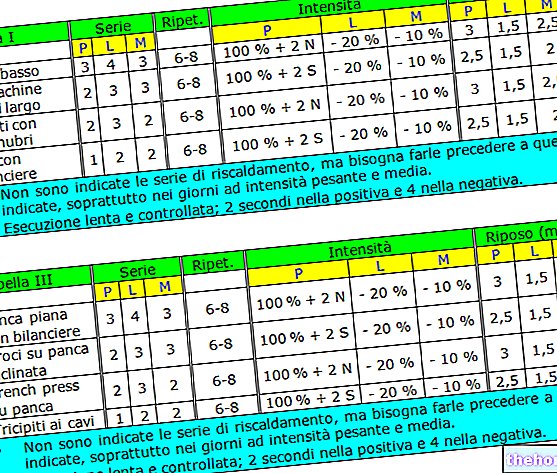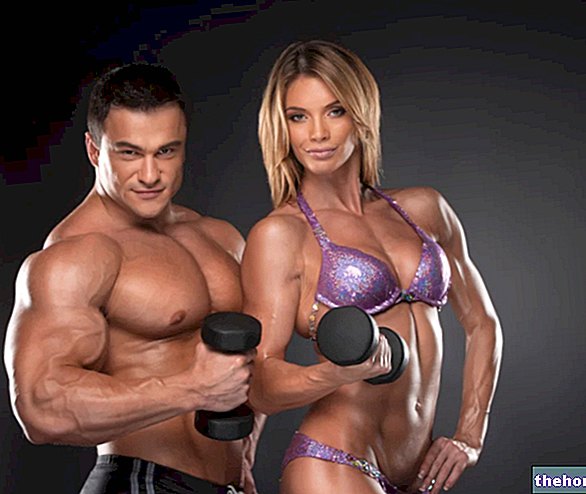
Note: do not confuse biceps curl for the brachial biceps with the legs curl, which is the flexion of the leg on the thigh - which trains the hamstrings.
There are various types of biceps curl, which involve differently not only the biceps, but also the other elbow flexors (brachial and brachioradialis), the shoulder joint and even some muscles of the shoulder blades.
Since there is a close correlation between shoulder pain and integrity of the long head of the biceps, this muscle is to be considered one of the major culprits in the painful symptoms of this joint (glenohumeral or scapulohumeral).
In this article we will go into more detail, highlighting the implications of the two most popular exercises for strengthening the biceps: straight-up curls and scott bench curls.
it is a biarticular muscle that connects the shoulder and elbow. The brachialis and the brachioradialis, which in any case participate in the flexion of the elbow, are instead monoarticular and connect the forearm to the arm (acting only on the elbow).
The tendon heads of the brachial biceps are three, two proximal and one distal. The two proximal ones are the long and the short. The long one originates on the supraglenoid tuberosity of the scapula and the short one on the apex of the coracoid process. The distal insertion, unique, is on the bicipital tuberosity of the radius.
The biceps brachialis muscle essentially stabilizes the shoulder joint, flexes, adducts the arm, and flexes the forearm over the upper arm.
Now that we understand "what moves and how it moves" the bicep, let's see briefly how to differentiate the different curls for the brachial biceps.
or sets);
Both the standing curl and the scott bench curl require substantial engagement of the flexor muscles of the forearm on the arm. What changes is the degree of elongation to which the biceps and its tendons are subjected, and the relative implications on the shoulder joint and on the muscles connected to the shoulder blades.
The standing curl results in a higher stretch.
"of the elbow.By placing an additional load on the elbow, you will force the elbow to stretch out, pulling the muscles involved. In the event of a major retraction, this could result in compensation of the shoulder due to anteriorization and consequent stress.
Furthermore, the anteriorization of the shoulder leads to stretching of the trapezius and rhomboid portion, which increase the cervical curve.
In the event that, while performing the curl, you make the mistake of fully extending your arm, the shoulder could be affected to a greater or lesser extent. This happens not only with the barbell, but also with the dumbbells.
A further aggravation of this condition is observed with the supine curl on the bench declined at 45 °, where the long head of the bicep is significantly elongated. This exercise, in fact, should only be practiced by people who enjoy an "excellent flexibility for that movement (especially in the final part of the Range Of Motion), which in addition to involving the bicep also implies the pectoral.
Obviously, the greater the variation of the bench, the greater the remuneration; for this reason, as we will see, often the solution is in a more accurate basic conditioning, which sees the use of the scott bench or the execution of the spider curl from prone on a bench at 45 ° as the protagonist.
Scott VS spider curl bench prone on bench at 45 °
If we thought exclusively about the problem of stretching the biceps, the scott bench and spider curl would be "almost" superimposable; although there is a substantial difference in the angular phase of maximum resistance.
However, in spider curl, due to the gravitational action, there is still a certain anteriorization of the shoulder.
That said, this naturally weighs (if we can say so) on the entire joint structure and therefore does not derive from the stretching of the long head of the biceps; this problem is totally bypassed, as well as any "discomfort" to the long tendon.
To solve the problem of "gravitational anteriorization, it is sufficient to adopt a correct, active posture, ie support (adduction) scapular and vertebral. Trapezius, rhomboids, etc. must be massively involved in stabilizing the shoulders and upper back - as happens in many others. strengthening exercises.
Of course, on the scott bench all of this is not necessary. However, it has another problem, namely the possible destabilization of the scapulohumeral or glenohormeral joint.
Especially when the height of the arm cushion is excessive, or that of the seat is insufficient, or when the seat is too far back from the cushion, the humerus goes in front traction and upwards, with relative compression of the structures which circumscribe the sub-acromial space.
If there is already a shoulder impingement, or a subacromial impingement syndrome - and related inflammation with pain - the practice (sometimes even correct) of the scott bench can be complicated or even not recommended.
shoulder is in extension.
However, this exercise, while considerably reducing the risk of compensating with the anteriorization of the shoulder and the increase in cervical lordosis, gives greater emphasis on the brachial and brachioradialis muscles.
Of course, the fact remains that for a profitable training of the elbow flexors in complete safety and without compensation, it is always advisable to respect the (subjective) joint physiology with specific reference to the retractions of the brachial biceps.
The choice of this exercise must not, however, be the definitive alternative. The primary objective remains to gain adequate flexibility of the muscles in question, in order to subsequently pass to exercises with higher ROM.
The initial "modus operandi" is to perform a stretch protocol on the biceps and only then dedicate oneself to the scott bench or spider curl, with a load that does not excessively anteriorise the shoulder. Always remember that the brachial biceps muscle is bi-articular; if the load is high it will act as a fixed point, flexing the muscle at its origin.
A point to note is that the flexor muscles of the elbow work in synergy with the muscles of the back in the traction movements.Above all in the final angle, however, also on the basis of the grip, we can see that each type of pull implies a significantly different involvement of the flexors from the others.
For this reason, the goal of biceps training is to seek maximum functionality, as well as obviously strengthening and increasing the transverse section of the muscle.























-nelle-carni-di-maiale.jpg)




